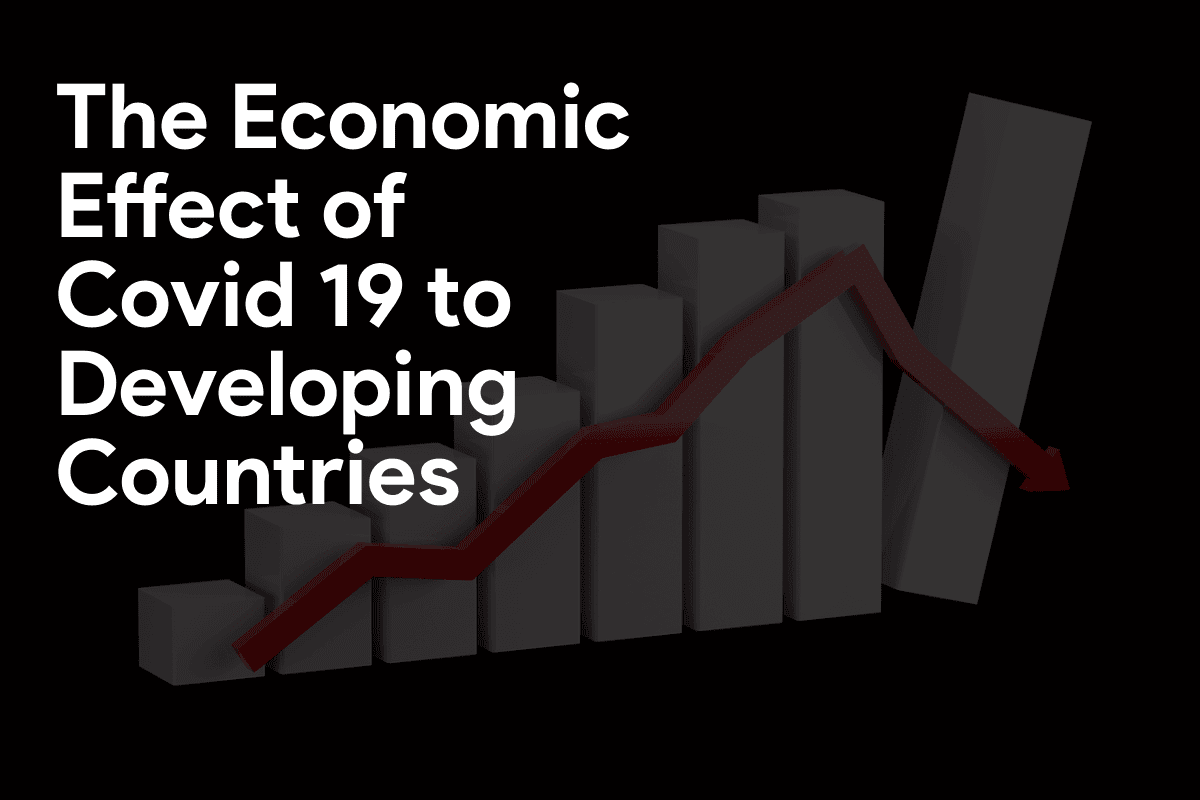More businesses are closed, workers asked to stay at home, many flights canceled, and the stocks are falling. A universal health crisis turns out to be a global health crisis. In every health calamity, our priority would be at the health of those affected. But what is the effect of COVID-19 on developing countries?
Many people have died worldwide. Numerous cases have been confirmed in over 110 countries. However, the economic effect also has a significant impact on families and communities. The needy families, losing earnings due to an epidemic, can turn into poverty, skipping meals for children, and reduce health care access even in a wonder box system.
As the virus widespread like routing numbers in the United States and Europe. Confirmed cases reported from Cameroon to Costa Rica, from Bangladesh to Brazil, as well as the other low- and middle-income countries. This means the world’s most vulnerable population is also affected by the economic impacts.
In this article, you will know, or you will get an idea of how the effect of COVID-19 has impacted developing countries (low- and middle-income countries).

General Network of Temporary Economic Impact of the Plague
People take actions to avoid catching the virus by doing “aversion behavior” and social distancing, which everyone should do. This aversion behavior comes from three different sources:
1. Government force bans certain types of activities, like when the government of China ordered factories to go out of business or Italy shuts down most shops within the country.
2. Companies and establishments, as well as private schools and private companies, take preemptive measures to avoid virus contamination. Business shutting —whether over government bans or business decisions — the result in loss of earning for workers, especially the irregular workers where there is no paid leave.
3. People minimize and cut their travel, trips to the market, going out, and other social activities.

These activities affect all sectors of the economy; the health sector, retail, industrial, and other services; trade and transportation, education, and more. This can cause reduced income over the supply side, which lessens the production that can cause price increase, and in demand-side decreasing demand from patrons damages the business owners and their employees.
These temporary economic effects can transform into long-term decreasing growth. While the health sector needs more resources and people minimize their social activities, it tends that the countries will lessen the investments in physical infrastructure.
When the schools are close, the student is losing their opportunity to learn, however, the helpless students can’t go back in education track that can result from a continuing lower earning trajectories for them and their families. And also, it decreases the general human capital; for the economies.
For instance, the unwanted pregnancy increase during the epidemic, likely because of school shut down. Teenage mothers have a lower chance of going back to school, and their children most likely have lessened health and education investment. Besides, the health workers are front liners on fighting these diseases, and more of them have gone because of the virus. The health condition can be worse in the long run. All of these have poverty implications that go beyond their humanitarian effect.
Most documented cases of COVID-19 are from the high-income nations. Latin America and Africa have few instances recorded. That’s why it’s hard to distinguish whether it is due to weak health systems in these said countries because they can’t diagnose the case effectively or is it because the virus is not yet spreading broadly.
That might be possible because they lacked actions. They didn’t detect it immediately, so the transmission of the virus in poorer nations may increase soon, though the outbreak has been controlled in higher-income nations. The outcome is, the health and economic effects from aversion behavior may last longer in the developing countries after the epidemic is diminished in rich countries.
What we see so far—and what to anticipate
An economic evaluation of global impact diverge dramatically, with Orlik and others on Bloomberg expecting $2.7 trillion missing in output, the Asian Development Bank gives a scenario that it is from $77 billion to $347 billion, and an OECD report says it’s about a half of global economic development. The effect of COVID-19 is global but the final analysis will show that the economic effect will be greater on developing countries.
Here are the collections of study of actual and possible economic effects of the crisis until now in developing countries:
- Baker-McKenzie – examines the likely impact across sectors in African countries, mostly concentrating on the reason why the Chinese economy becomes weak, by the reduced Chinese demand on raw materials, possible decline investments in energy, mining, and other sectors, and a decrease in travel and tourism.
- An Asian Development Bank – presents four scenarios; best-case, reasonable impact, poor case, and the poorest case for 22 Asian countries predicting the main implications in the Maldives, Cambodia, and Thailand.
- DW – documents in what way the closure of Chinese factories affect consumers in Africa. Most of the imports of Ugandan are from China. Supply chains have been choked for weeks because many factories in China are close.
- Small traders like selling textiles, household, or electronic goods are in distress.
- In Niger, stocks of certain goods, as well as the groceries from China, have been reduced, which will lead to a price increase.
- In Zimbabwe and Angola, exports to China stop.
- Jeremy Stevens of Standard Bank in Beijing – shows the possible interruptions but focus on once the plague is under control, the strength of China’s competitive in infrastructure advantage, outside overloading sectors, and heavier commerce, and a fast-growing consumer market. All of this will surely remain.
- Strategy & estimates – a likely loss of at least R200 million in Chinese tourist expenditure in South Africa.
- Dai, Hu, and Zhang – detailed from the Enterprise Survey for Innovation and Entrepreneurship in China. Twenty percent of plotted firms will be incapable of lasting further than a month on a money flow basis, and 64% beyond three months, showing a terrible scenario for small and medium-sized enterprise is going into bankruptcies in an extended epidemic setup.
Most of the facts and witnesses affect developing countries started from stopping the production and exporting in China and in anticipating the deterioration of the economic situation in the US and Europe. But then, as the economies of the other country go slow because of the epidemic disease, we can see the effects in the economic data likely grow over time.

What do we have to do to stop the economic effect of COVID-19 on developing countries?
What do most people do to diminish the economic effect of COVID-19 for developing countries? Here are the actions:
Contain the pandemic
To ease the market reaction in an outbreak, you have to make a feasible plan to defeat the virus. Given that the plague actively dispersed, there’s still more action that can be done to stop spreading the virus. Containing the disease is the start to lessen not only the health effects but also the economic impacts.
Strengthen the safety net
The most helpless households are the most affected economically. Frequently, most probably the low-wage earners can lose their job when they always fail to go to work because of an illness. They still need to work even if it is risky, and most likely, they have no savings to stay alive in an economic crisis. When you have these safety nets like cash transfer, sick leave, and supporting health coverage, you probably survive and may offer help to the needy individuals.
Measure the impact
Organized data on which people are experiencing the utmost hardships and which industries are weakening is necessary to provide support. During the Ebola epidemic, researchers researched Sierra Leone and Liberia using a phone. They build on the frames from existing surveys by collecting information on the effects of both ill-health and aversion behavior on households and enterprises within the countries. Monitoring the economic situation and providing help to those in need can lessen the most urgent necessities.
On a final note
The effect of COVID-19 outbreak has a high impact on health and in the economy all over the world. We have to follow the preventive measures that the government has given. Most importantly, be responsible for stopping the spread of the virus so we and also the economy can get back on their feet. So we can live a healthy life again.
Featured Image by Mediamodifier from Pixabay





